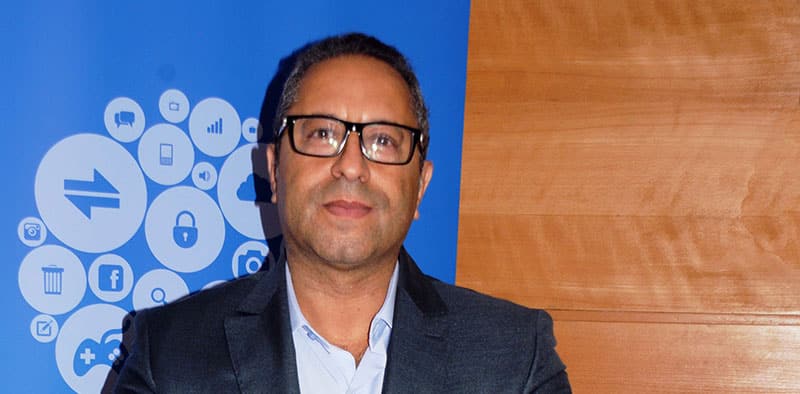Nine Pre-emptive Rules to Tame Chaos & Complexity in The Disruptive Age

In less than few weeks, the new #tic-tac-on-the-clock world calendars went from Christmas Spirit and shopping to Fast & Furious blowouts of what was left from Black Frenzy Fridays, Cyber Mondays and weekly to get rid of “less-than-one-year-vintage” collections, unscratched desktops, barely opened master chef toasters (still under warranty), games & consoles, Halloween costumes, iPopping gadgets, designer perfumes and fashion glasses in all colors and shades. While kids and families are happy to unwrap their Christmas gifts and office managers their Happy New Year business cards, many CEOs & CIOs are either scared to death or jubilant to release their new products and innovative models in front of millions of visitors at upcoming tradeshows like #CES2016 and #Cebit2016 among so many upcoming venues ready to host all kinds of ephemeral trends. This horror picture show is unlikely to change the digital landscape or our addiction to new apps. In fact, disruptive business models, technologies and solutions are the new norm.
In our tech-knowledge society, being fast and prompt at creating chain value for the customers, stakeholders, co-workers and peers in #frugal fashion (see #Jugaad Leadership in SSIR) is a must for those willing to survive in our fast paced and unpredictable times. Innovation leaders who managed to replace weather forecasting by creating pre-emptive technology storms from one corner of the planet to another, are making huge gains as they have made destructive creation at the forefront of their mission critical decision processes; in other words, they have made disruptive innovations as a source of wealth, branding and almost a way of life.
As matter of fact, unless you are a German Mittlestand like Faber Castel who God spared like Noah from the radioactive effect of disruptive technologies; you have no choice but to go through inoculation to spare you from extinction.
While the numerous terror attacks like the 9.0 earthquake in Chile, BP’s oil spill, Tsunamis and hurricane Katrina have made top executives and decision makers sensitive to disaster management, many companies have not yet embraced the positive impact of complexity and chaos theory as a pre-emptive model and a source of creativity when it comes to dealing with disruptive innovations in the digital age.
Developing crisis management, business continuity and disaster recovery plans are neither enough, nor sufficient to tackle Open Source irruptions, toxic ideologies, radioactive business models like Uber & Airbnb, viral trends on social networks and bumper to bumper innovations. Billions of people, consumers, citizens, jihadists, worshippers, voyeurs, geeks and shoppers are connected to one another in what is becoming a small web village where distances are only few clicks away.
Six degrees of separation experiments are no longer surreal or strange to our insatiable thirst for connecting just about everything we do in our digitized Metropolis. The chaotic changes are up in the air not for a day, a week or even a decade as living on the edge of chaos is about to become the new norm and the tremors of tipping points closer and closer. Unless, we learn how tame the new demons of complexus most management Complexity Rule s, principles and vade mecums learned through business schools, rehearsed in the boardrooms and practised in brick and mortar factories will become obsolete.
Taming complexity in the disruptive age entails agility skills and business models which most business schools are not fit to offer. Current training in executive education programs around the world do not include boot camp or training to deal with 9.0 aftermaths like the Japanese people who are born to be resilient and to rebuild from scratch in a fraction of time if compared to many aspiring nations.
While many CEOs after 9/11 went into extensive trainings to improve their capacities to dealing with terror fears, inadequate management practises and trainings be they vocational, academic or professional are still money courante in top business schools as classroom seminars and professional workshops are still based on case studies, slide presentations, VVD documentaries to teach future decisions makers how to cope with uncertainty and unpredictability. This is called learning by doing.
-Unless we move beyond crisis management, budget planning, disaster recovery, short term forecasts & after Closing Bells Analysis, the next CIOs or CEOs will have to deal with recurrent anxiety attacks every semester as emerging technologies and trends are about to create as much havoc as ISIS’s did through its Non-Linear Business Model & Butterfly Effect formulae. Modern corporations must learn how to deal with chaotic systems and patterns as widely known and practised by many world renowned scientists such as Lorenz, Mitchell Waldrop and Nobel Prize Winner Murray-Gell-Man. Here are few take ways and resolutions for 2016:
Complexity Rule No 1: Emergence is one of the most fundamental constituents of complexity theory and complex adaptive systems. Living systems and organisms are known to change properties, behaviors, mutate one way or another like all living creatures. Under this assumption, expecting the unexpected is a paramount tenet of anticipative thinking. It means you need to stay ahead of the curve.
Complexity Rule No 2: the tiniest stimulus, twit, picture or slogan could cause great impact on any given entity, corporation or a brand. Why? Because systems according to Lorenz’ s famous principle about the sensitive to initial conditions is a critical trigger. As we all have learned without knowing Mandelbrot’s non-linear model through the testimonial of Alan Greenspan on the Subprime was asked about the #Subprime Mortgage Crisis. His answer was:
What matters the most is not the size of the error as any oops could trigger a chain reaction. The Captain of the Titanic was right 99% of the time, but only wrong 1% said Alan Greenspan during the hearing committee in charge of analyzing the Subprime Mortgage Crisis & Meltdown.
Complexity Rule No 3: One of the striking features of the digital age is the rise of social media as the biggest outlet for semiotic exchanges, tangible and intangible goods & services, ideas and ideologies. As the number of interconnected people and communities keep on expanding from anywhere to everywhere, it is increasingly difficult to keep track or monitor all sources of noise; hence the necessity to developing filtering skills and empathic listening to what goes on outside our corporate aquariums.
Complexity Rule No 4: self-organization and the rise of the leaderless
We are not the only specie to act like flocking birds, or the only people to be fascinated by self-organized tribes, dancing bees, micro dwellers like #Woody Allen’s #Ants. Self-organization is a natural process which characterizes living and non-living creatures including viral bacteria which tend to multiply and spread without any fertilizers or operating software.
Bear in mind that self-organized communities, P2P networks and social groups are nowhere to reach depletion as the number of instant entrants in the marketplace are abundant nowadays; therefore, it’s important to foster self-regulation and adaptive behaviours.
Overhauling crisis planning could compel CEOs to create teams of collaborators who are capable of being self-organized and ready to undertake instant non-traditional jobs or tasks…
Complexity Rule No 5: Dealing with uncertainty and unpredictability in the Age of Chaos Crisis planning for business continuity, disaster recovery programs and checklists are neither enough or sufficient to deal with the rapid changes affecting the targeted audience.
Complexity Rule No 6: Direct leadership involvement in business continuity and disaster prevention programs is needed to heighten the level of awareness among employees towards the disruptive nature of innovation economy. Developing crisis management, business continuity and disaster recovery programs and then training and testing employees require significant executive time and can emotionally
Complexity Rule No 7: Given the new business climate and evolving nature of risks, the level of inter-connectedness, even the most prepared organizations may well need to add additional layers of creativity with a zest of pre-emptive thinking.
Complexity Rule No 8: The rewards related to creating strong pre-emptive predispositions, agile methods and lean programs can be enormous, both in terms of resilience, and capacity to fend off any offensive attack on your market share in the event a new player erupts like a sinkhole in your territory.
Complexity Rule No 9: In light of increasing corporate concerns about the impact of technology on consumer behaviour around the world, it is important that you stay tuned to your immediate and long term audiences. The best way to stay connected is to emulate the local Telco and become a brand or a service operator.
In fine, complex adaptive methods applied to modern organizations are based on empathic listening, evolving ecosystems and social dynamics. As such, they have a proclivity towards looking at corporations from a biological perspective hence the necessity to treating co-workers more like natural cells as sets of active agents unlike the Taylorian models where collaborators were treated like mere production instruments in uniforms as portrayed brilliantly by Charlie Chaplin; in other words we need to look at our human resources as a source of renewable energy very much like an in-house power reactor. Buying cheap fuels or sourcing new talents to deal with emerging challenges could be time-consuming and expensive or worse incompatible with the long term comrades and business associates. Why not simply implement a pre-emptive culture based on creative destruction, emergence and non-linear thinking.
**********
Have you read?
- The 10 Most And Least Competitive U.S. Cities For Job Growth In 2015
- America’s 25 best online MBA programs for 2016
- 25 most romantic cities in America for 2016
- 30 Famous Inspirational Quotes, Sayings, And Proverbs In German With Translations
- Connecting with 3 developers a minute
- Marissa Mayer, “No Margin No Mission”
By Jamal Boukouray, PhD
Sr Professor, Management Consultant & Keynote Speaker
Core Specialties include Management of Innovation, Complexity, Organizational Management & Leadership in the digital age, rebranding & extreme corporate makeovers.
ESCA School of Management, Casablanca
Bring the best of the CEOWORLD magazine's global journalism to audiences in the United States and around the world. - Add CEOWORLD magazine to your Google News feed.
Follow CEOWORLD magazine headlines on: Google News, LinkedIn, Twitter, and Facebook.
Copyright 2025 The CEOWORLD magazine. All rights reserved. This material (and any extract from it) must not be copied, redistributed or placed on any website, without CEOWORLD magazine' prior written consent. For media queries, please contact: info@ceoworld.biz









